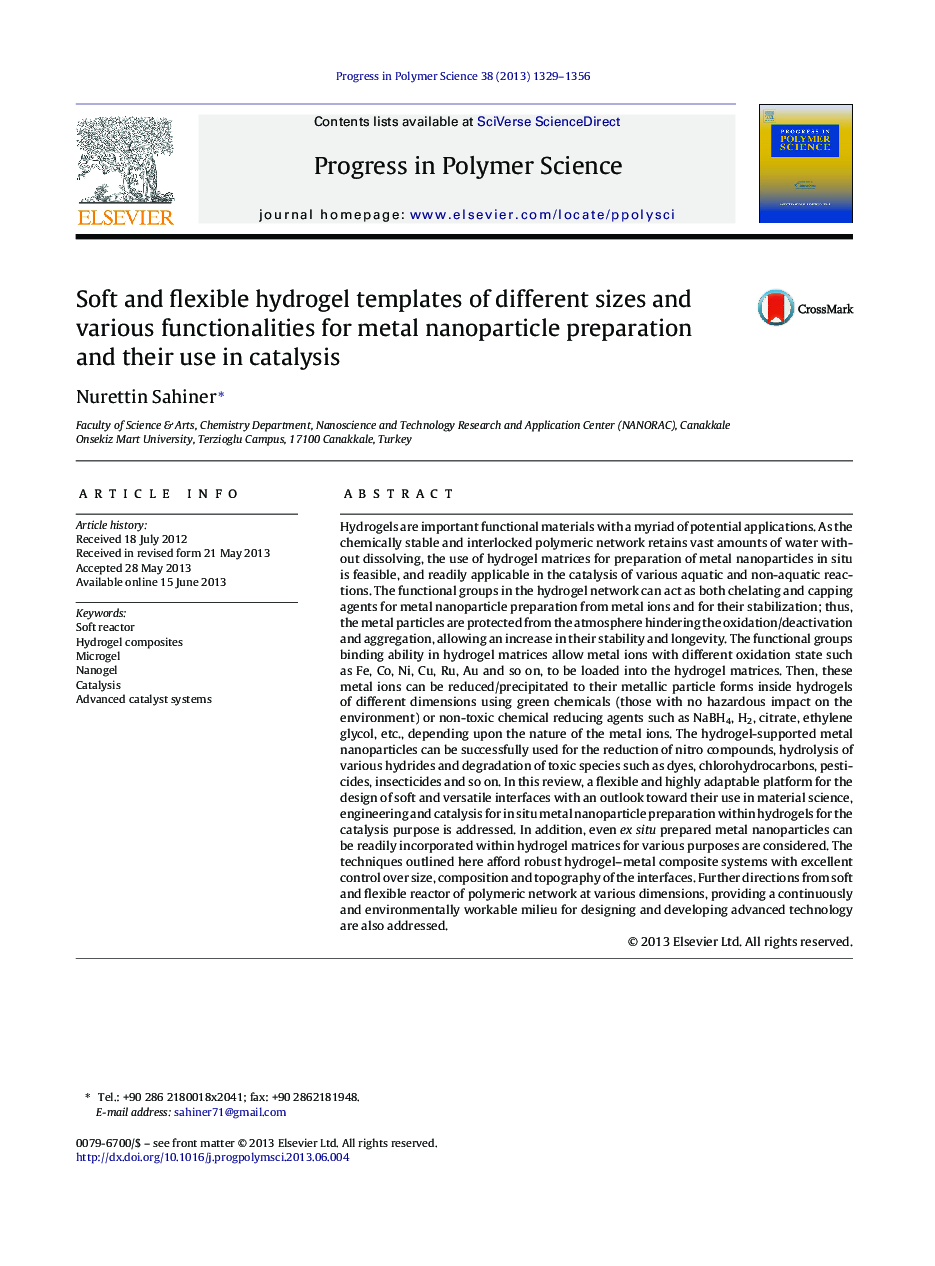| Article ID | Journal | Published Year | Pages | File Type |
|---|---|---|---|---|
| 5208376 | Progress in Polymer Science | 2013 | 28 Pages |
Hydrogels are important functional materials with a myriad of potential applications. As the chemically stable and interlocked polymeric network retains vast amounts of water without dissolving, the use of hydrogel matrices for preparation of metal nanoparticles in situ is feasible, and readily applicable in the catalysis of various aquatic and non-aquatic reactions. The functional groups in the hydrogel network can act as both chelating and capping agents for metal nanoparticle preparation from metal ions and for their stabilization; thus, the metal particles are protected from the atmosphere hindering the oxidation/deactivation and aggregation, allowing an increase in their stability and longevity. The functional groups binding ability in hydrogel matrices allow metal ions with different oxidation state such as Fe, Co, Ni, Cu, Ru, Au and so on, to be loaded into the hydrogel matrices. Then, these metal ions can be reduced/precipitated to their metallic particle forms inside hydrogels of different dimensions using green chemicals (those with no hazardous impact on the environment) or non-toxic chemical reducing agents such as NaBH4, H2, citrate, ethylene glycol, etc., depending upon the nature of the metal ions. The hydrogel-supported metal nanoparticles can be successfully used for the reduction of nitro compounds, hydrolysis of various hydrides and degradation of toxic species such as dyes, chlorohydrocarbons, pesticides, insecticides and so on. In this review, a flexible and highly adaptable platform for the design of soft and versatile interfaces with an outlook toward their use in material science, engineering and catalysis for in situ metal nanoparticle preparation within hydrogels for the catalysis purpose is addressed. In addition, even ex situ prepared metal nanoparticles can be readily incorporated within hydrogel matrices for various purposes are considered. The techniques outlined here afford robust hydrogel-metal composite systems with excellent control over size, composition and topography of the interfaces. Further directions from soft and flexible reactor of polymeric network at various dimensions, providing a continuously and environmentally workable milieu for designing and developing advanced technology are also addressed.
